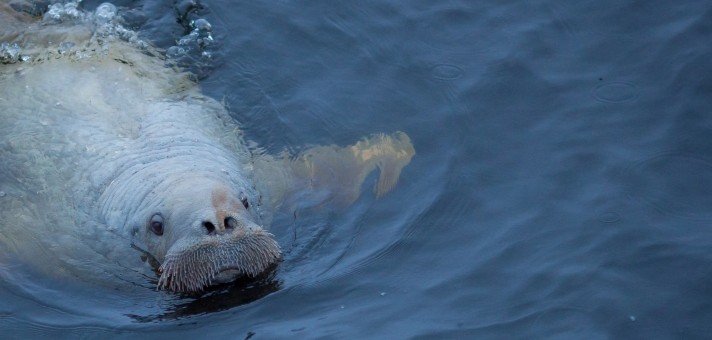At present MMBI has several research stations, which enable multidisciplinary investigations to be carried out:
- Seasonal biological research station in Dalnie Zelentsy settlement;
- Experimental sites in Saida Bay and on Tonya Cape;
- Biological research stations on Spitsbergen and Franz Josef Land;
 Seasonal biological research station in Dalnie Zelentsy settlement
Seasonal biological research station in Dalnie Zelentsy settlement
Biological research station in Dalnie Zelentsy settlement was founded in 1935 and reorganized into the Murmansk Marine Biological Institute in 1958. Over the period of the Station existence in Dalnie Zelentsy settlement a rich database on hydrobiology and oceanography was created and unique collection of flora and fauna of the Arctic seas was gathered.
More than 100 researchers from different institutions of the Russian Academy of Sciences and other institutions carry out research works at the Station annually and students from different higher education institutions do their practical work there.
- year-round scientific expedition program “Phytobenthos”, which includes the study of species diversity, biology and ecology of macrophytes in the Barents Sea, the experimental work focuses on the ontogenetical processes, adaptation and physiology of algae;
- the annual seasonal expedition program “ the Red king crab from the Barents Sea” on monitoring of the introduced species and on the study of its biology and ecology;
- the research into the diversity of intertidal and subtidal fish community of coastal waters of the Kola Peninsula;
- daily hydrological monitoring of gulfs and bays of the East Murman;
- the research into production processes in microplancton communities of the Barents Sea.
Spherical panorama of Dalniye Zelentsy:
http://www.360cities.net/image/dalnie-zelentsi
http://www.360cities.net/image/institute-mmbi
http://www.360cities.net/image/guba-dalne-zelenetskaya
Experimental sites in Saida Bay and on Tonya Cape

In water area of Saida Bay and on Tonya Cape floating enclosure complexes for long-term keeping of white whales and the Arctic seals are collected. It enables scientists to carry out research on nutrition and behavioral features of marine mammals, to develop methods for prevention, diagnostics and treatment of animal diseases. Large work on teaching animals is carried out to use them for search and rescue services and technical underwater operations at sea.
In 2004 the Institute started experimental works in the field of the arctic mariculture and also investigations of the red king crab biology and ecology.
Experimental site on Tonya Cape (southwards Polyarny) is the stationary base of MMBI for year-round marine mammals investigations. The long-term keeping of pinnipeds in conditions (temperature, salinity, ice coverage) close to natural ones allows conducting unique experimental works on complex estimation of physiological and behavioral parameters of pinnipeds. The equipment of the experimental site started in 2007.

Beside that today MMBI carries out observations at 6 coastal research stations located in gulfs and bays of the Kola Peninsula: Dalnezelenetskaya Bay, Yarnyshnaya Bay, Kola Bay areas near Safonovo settlement, Gadzhievo settlement, Ugolnaya base, marine passenger terminal). The stations are used for monitoring of the thermohaline status of the Barents Sea coastal zone and creation of time series at representative points. For this purpose, the long-term systematic hydro-meteorological observations on temperature and salinity of the surface water layer, on cloudiness, wind, air temperature and humidity are carried out all the year round.
Biological research station on Spitsbergen
Multidisciplinary investigations on Spitsbergen have been carried out since 1994 at the premises of the RAS in the Barentsburg settlement. In 2012, MMBI completed equipment of its own Spitsbergen bio-geostation. It was officially opened on April 1, 2012. The opening was attended by representatives of the Kola Science Center, Polar Geophysical Institute RAS, Barentsburg zonal hydrometeorological observatory, University Centre in Svalbard (Longyearbyen, Norway). Bio-geostation is located on the outskirts of the Barentsburg settlement in 500 meters from Cape Finnoset. The building has a meeting room and a laboratory. The laboratory is fitted with equipment for primary processing of samples of water, bottom sediments, with optical instruments and equipment for benthos and plankton sampling.
The basic directions of scientific work on Spitsbergen are:
- obtaining of comparative data on biodiversity of flora and fauna and marine ecosystems in the northern part of the western Gulf Stream Current;
- development of the model for processes of melt (fresh) water influencing on the marine ecosystem in the Western Spitsbergen glacial fjords of different type;
- monitoring of evolution of the Arctic ecosystems and other natural phenomena.





